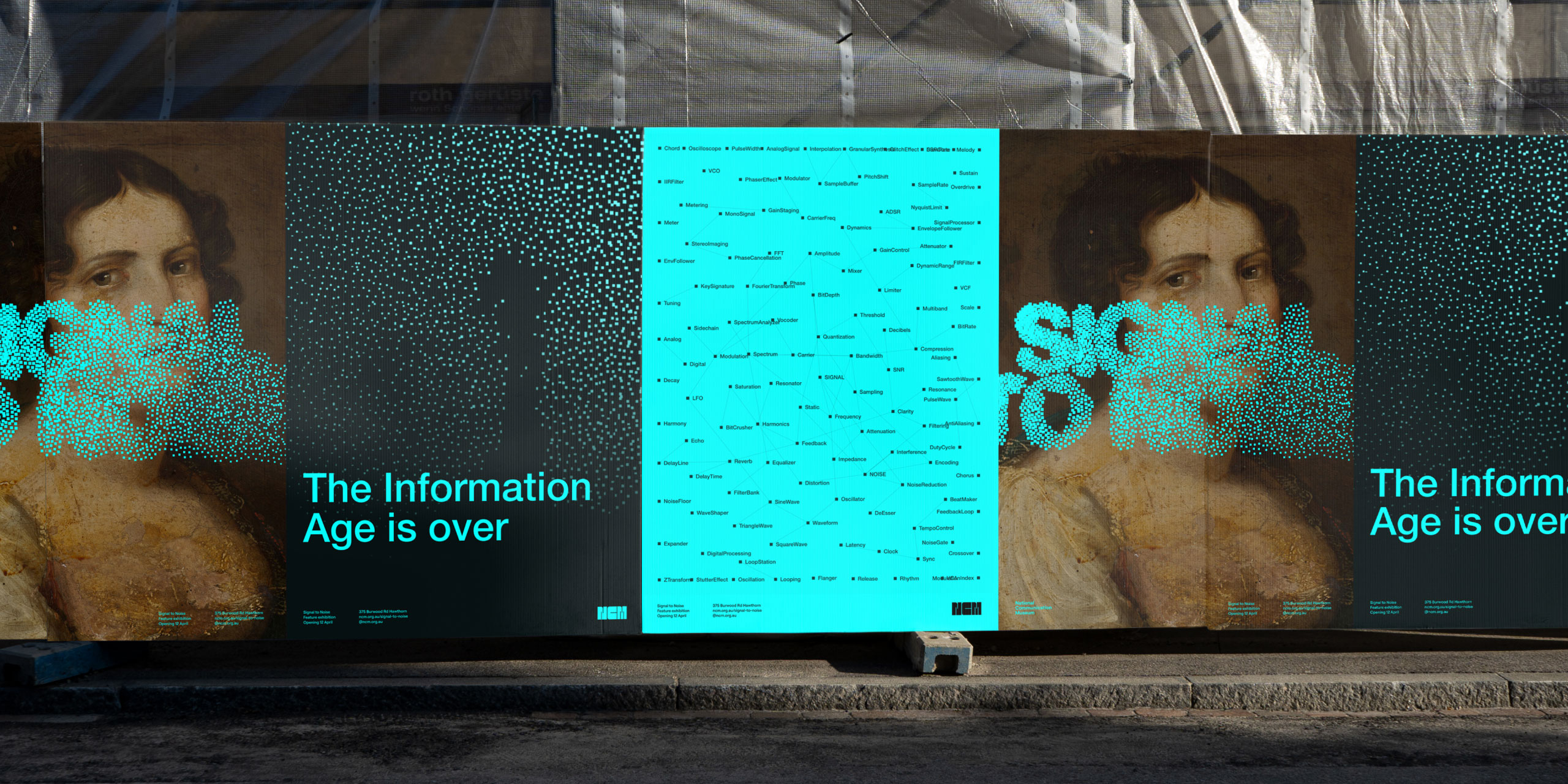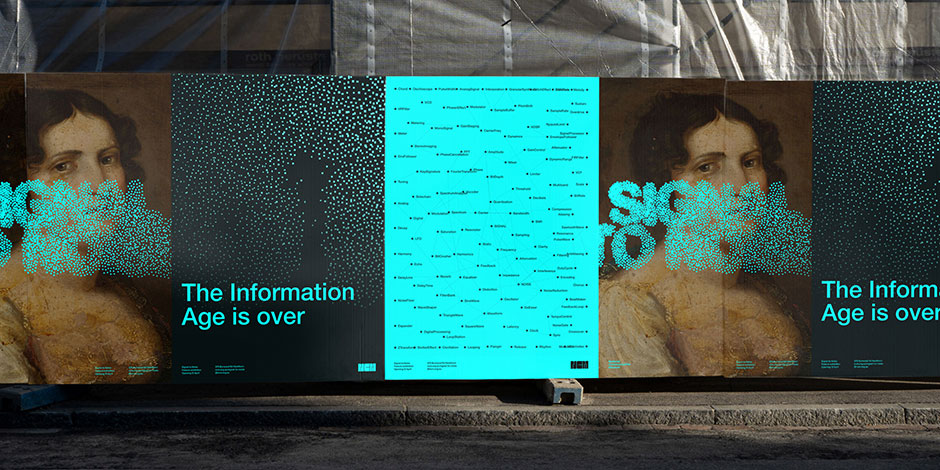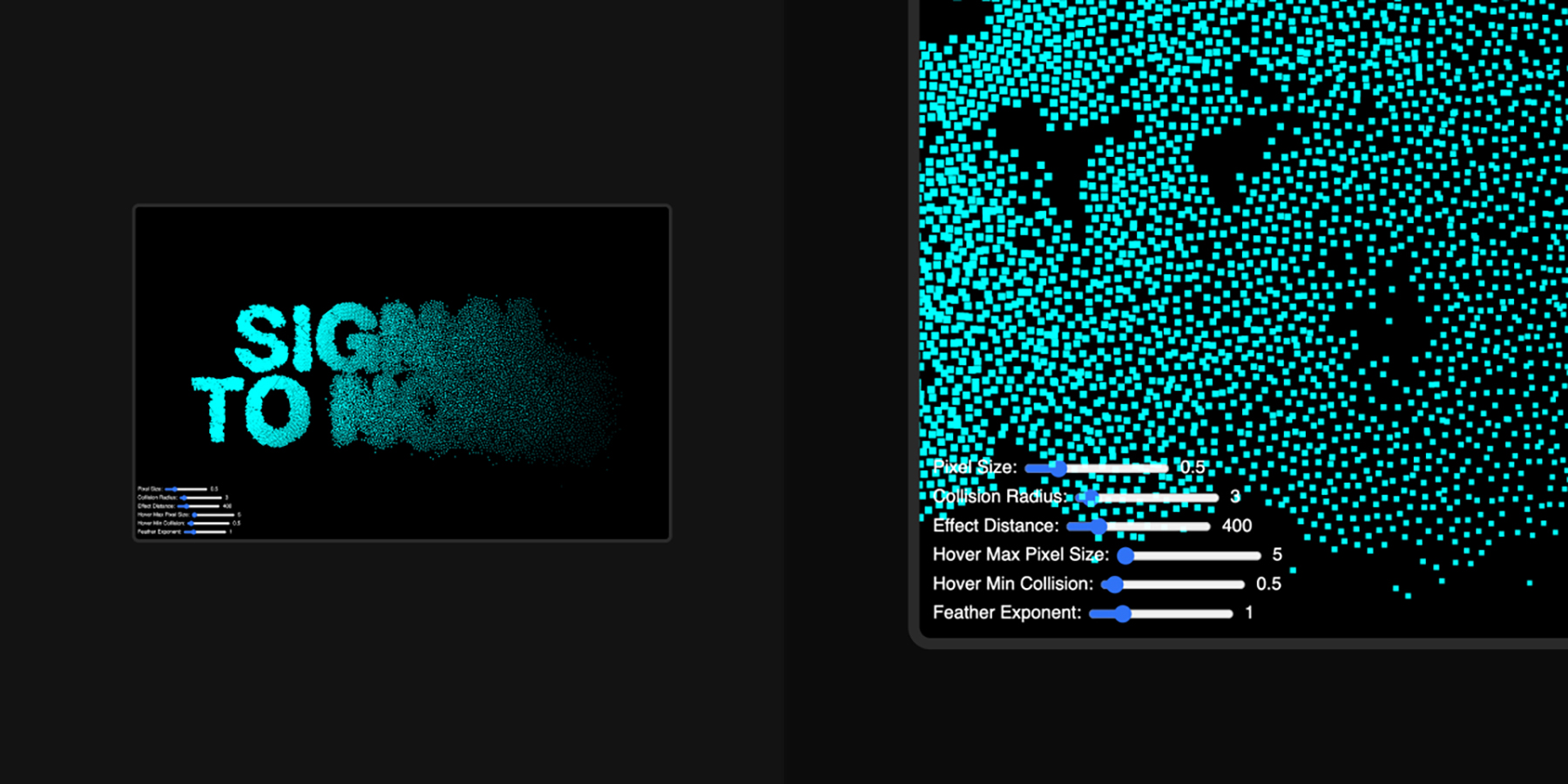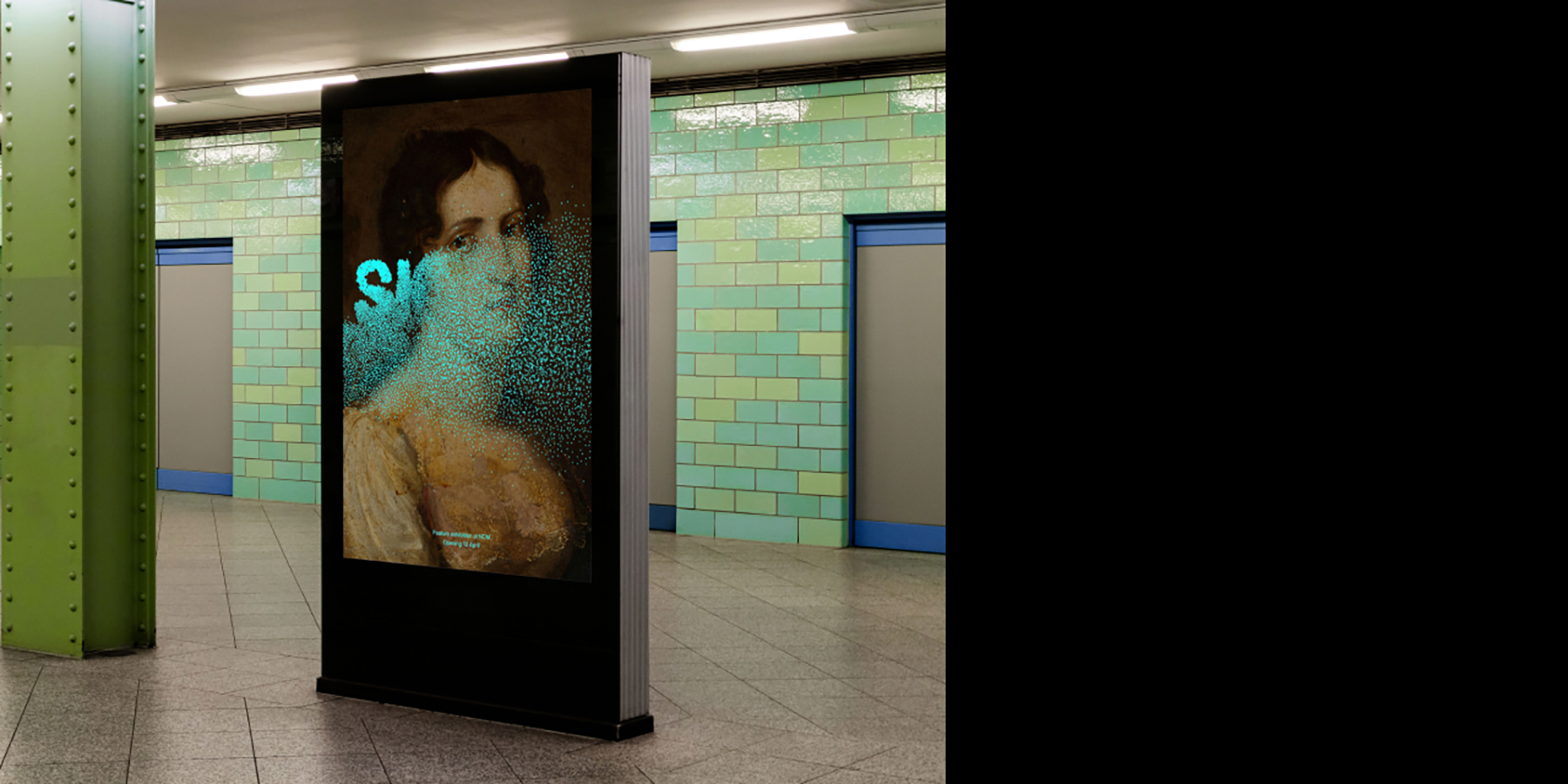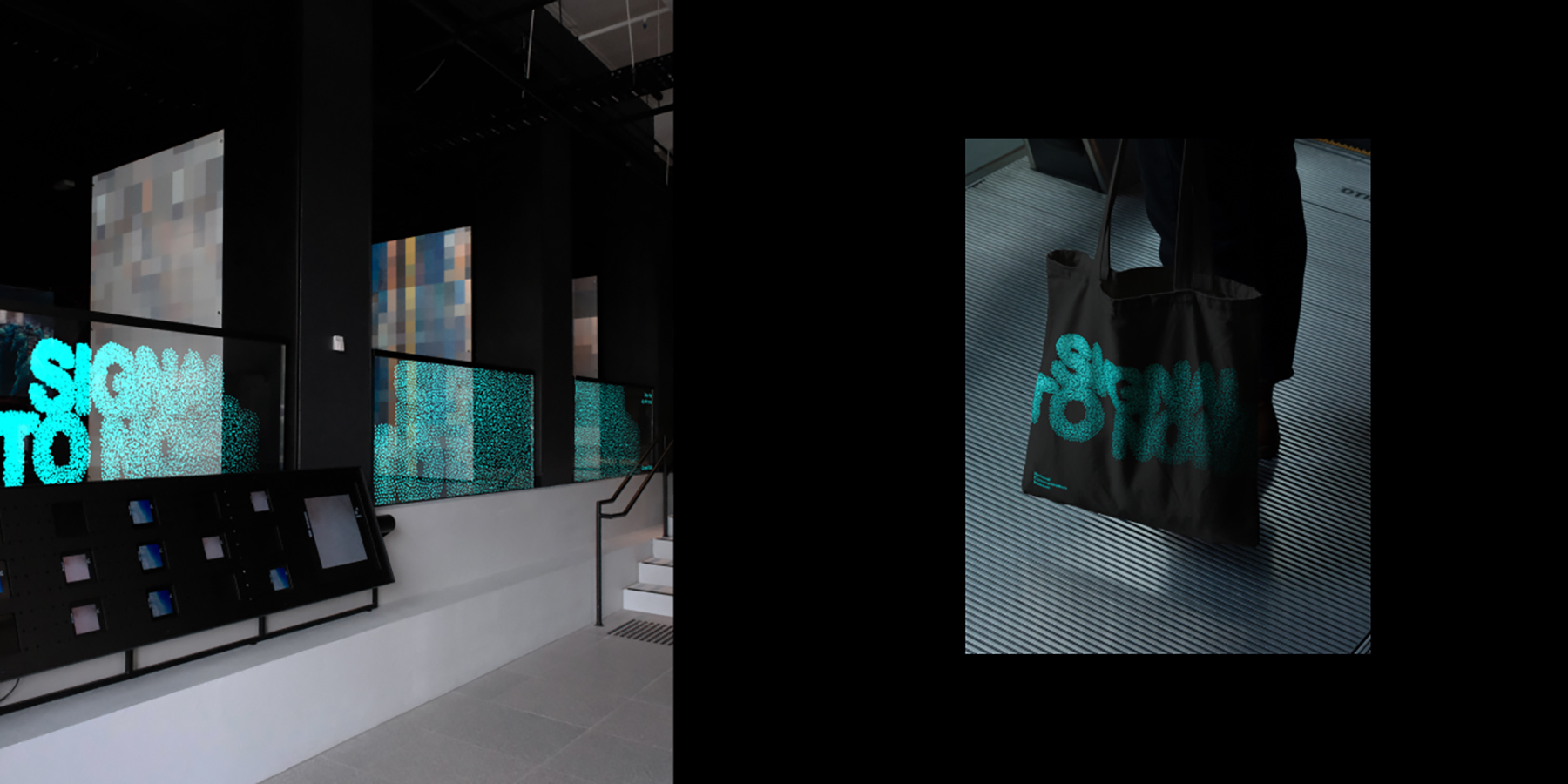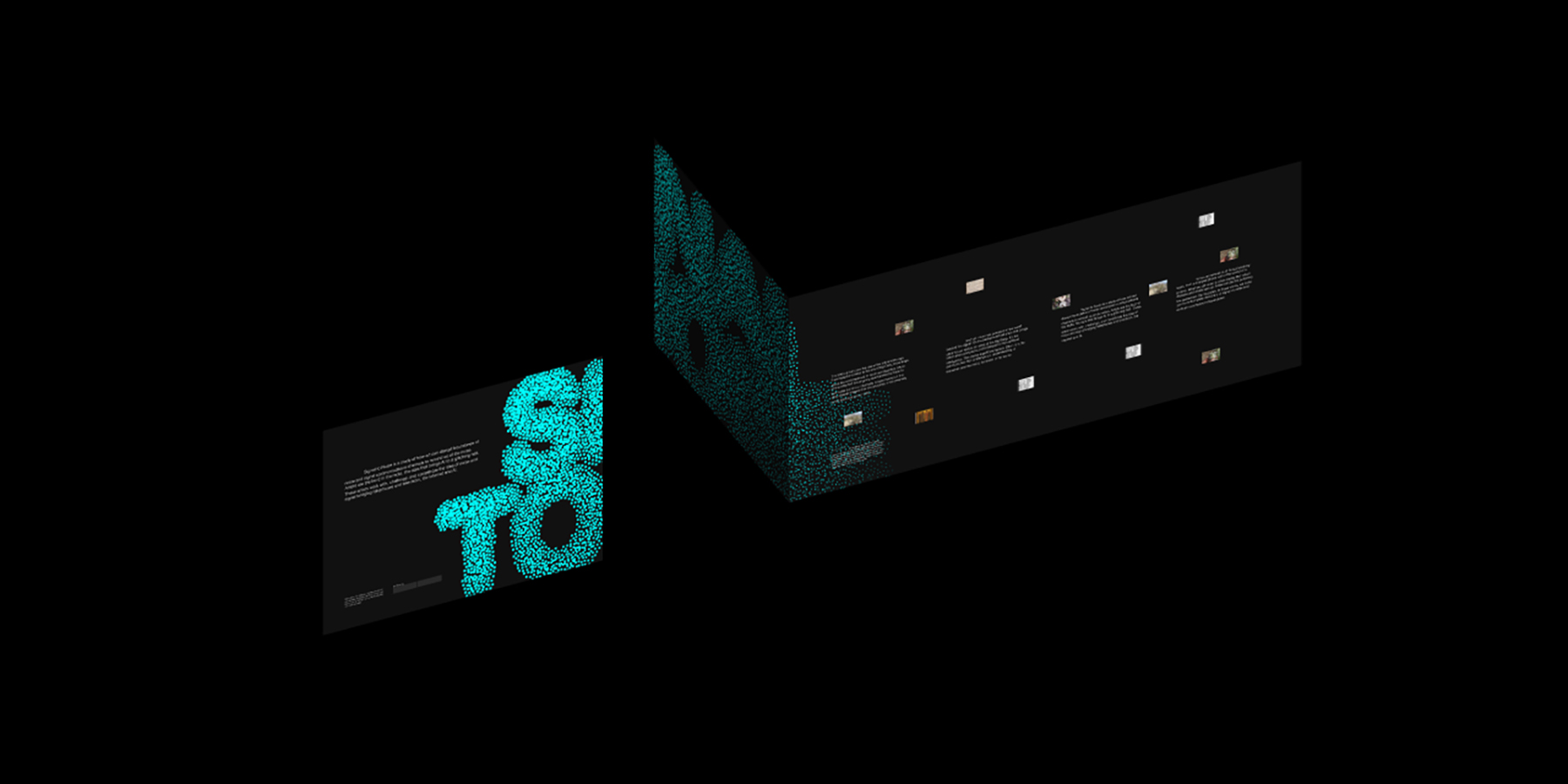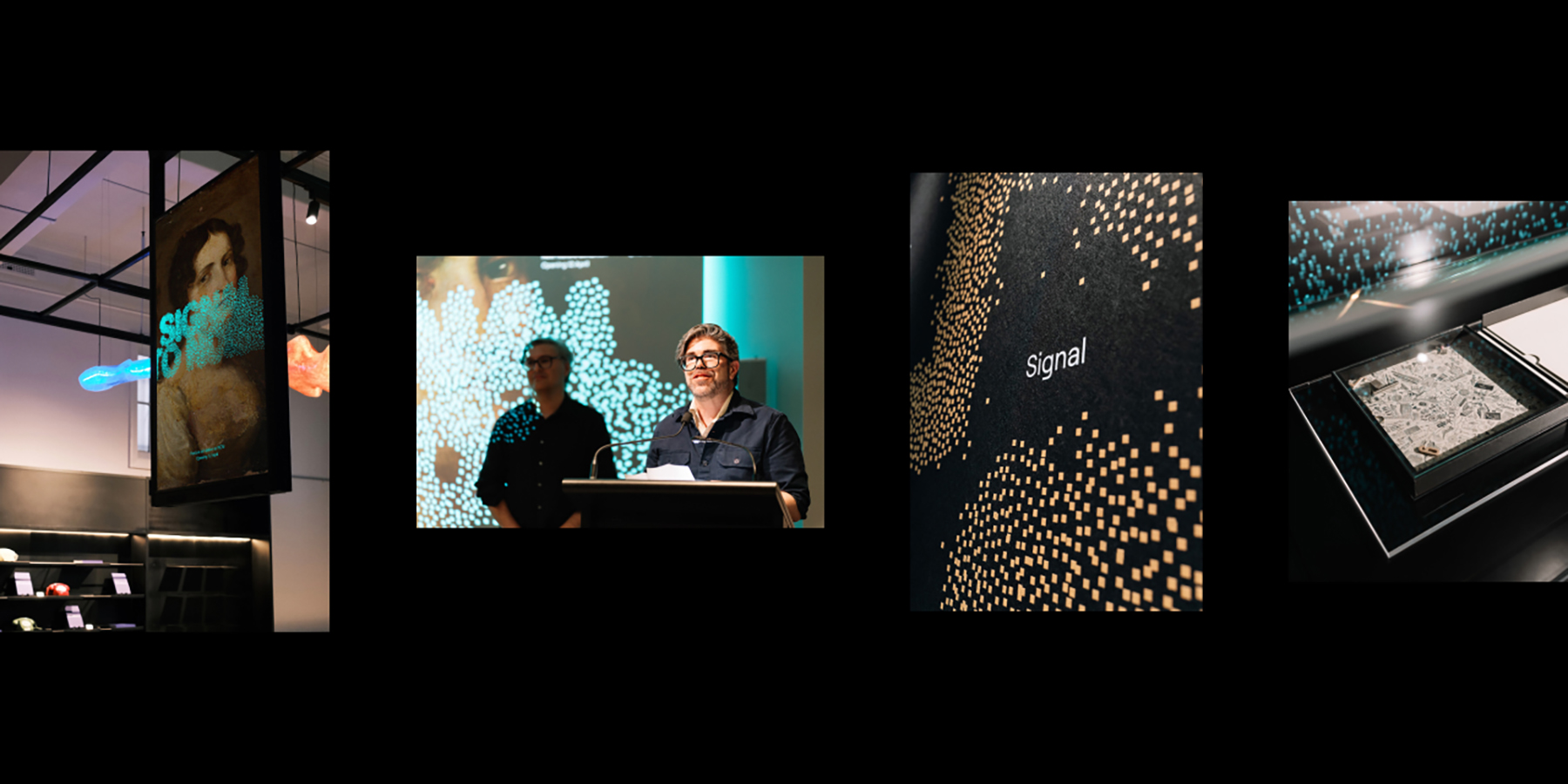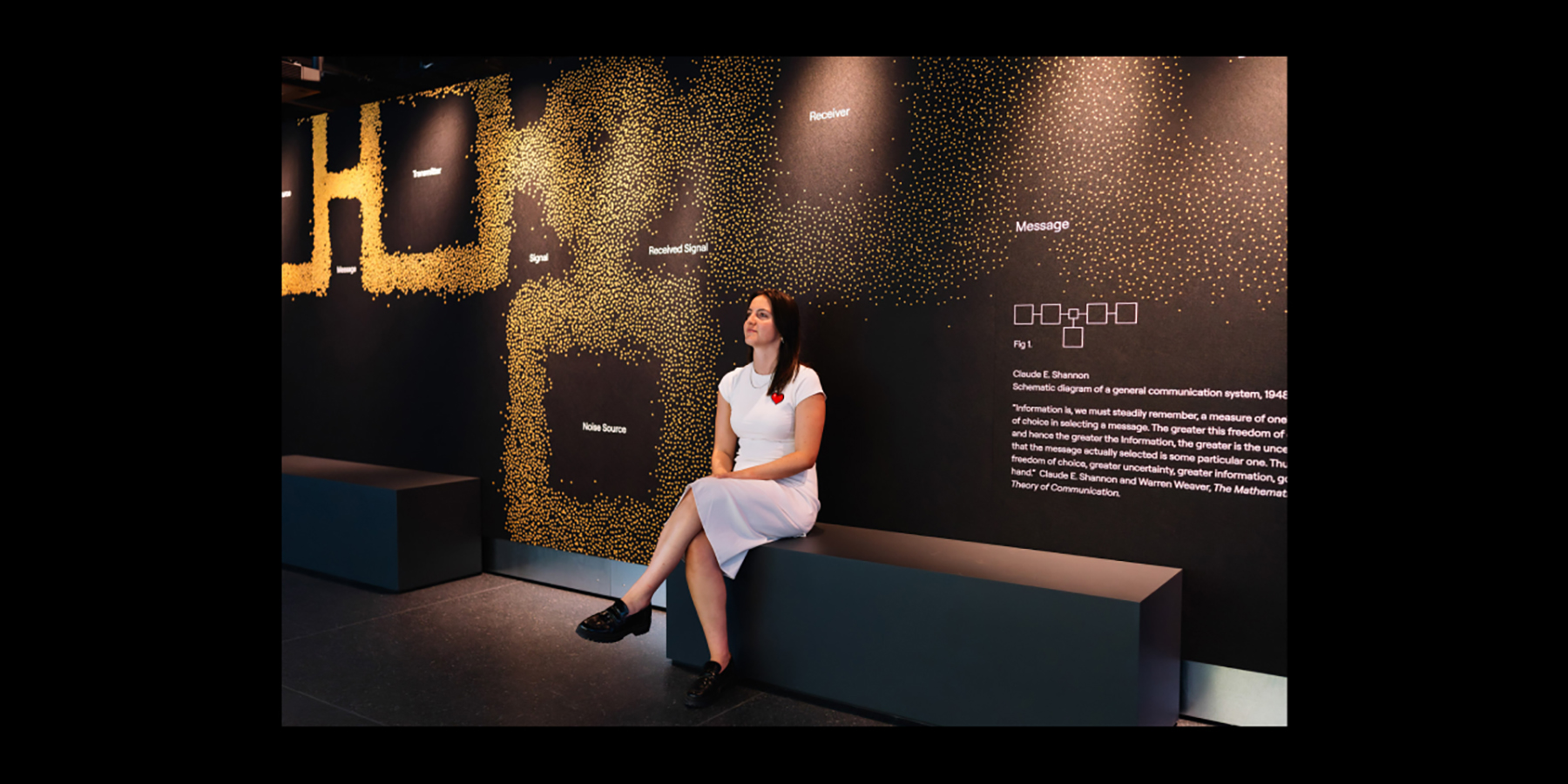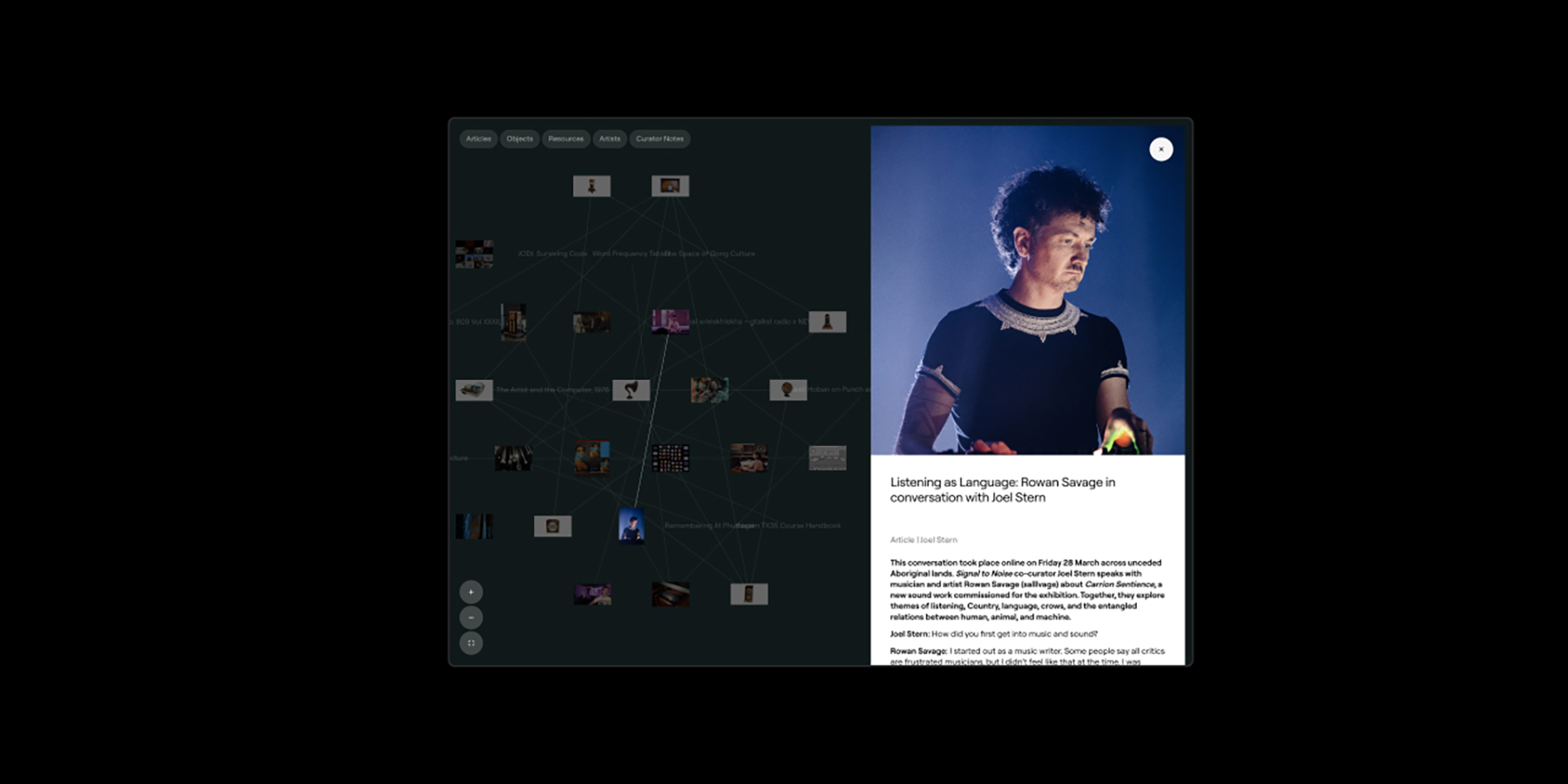The design process began with an in-depth collaboration between our team, the National Communication Museum curators, and participating artists to fully understand the exhibition’s complex themes around noise, disruption, and communication. We conducted workshops and research sessions to explore how these concepts could translate visually without overshadowing the artworks themselves.
From these insights, we developed the core idea of a generative, ever-evolving identity that mirrored the exhibition’s fluid relationship between clarity and chaos. Using d3.js—a data visualisation tool—we created a system of 10,000 nodes that interact dynamically, allowing the logo and graphic elements to shift between readable forms and abstract configurations. This approach ensured the brand was not static but alive, echoing the exhibition’s message.
To address the need for flexibility and scalability, we built a custom browser-based tool enabling the team to generate multiple logo variations across resolutions, formats, and applications. This streamlined production workflows and allowed for seamless adaptation across digital signage, print materials, outdoor advertising, and in-gallery installations, including unique surfaces like acoustic panels and glass.
Motion design was integrated thoughtfully, enhancing the visual language without distracting from the art. Subtle animations reflected the concept of noise as movement and disruption, further engaging visitors. Throughout, close collaboration with production experts ensured high-quality execution across diverse media, overcoming challenges related to materiality and budget constraints.
The result is a professionally crafted, innovative identity system that not only met but exceeded the brief—supporting a cohesive, immersive visitor experience while pushing the boundaries of exhibition branding through generative technology and interactive design.

